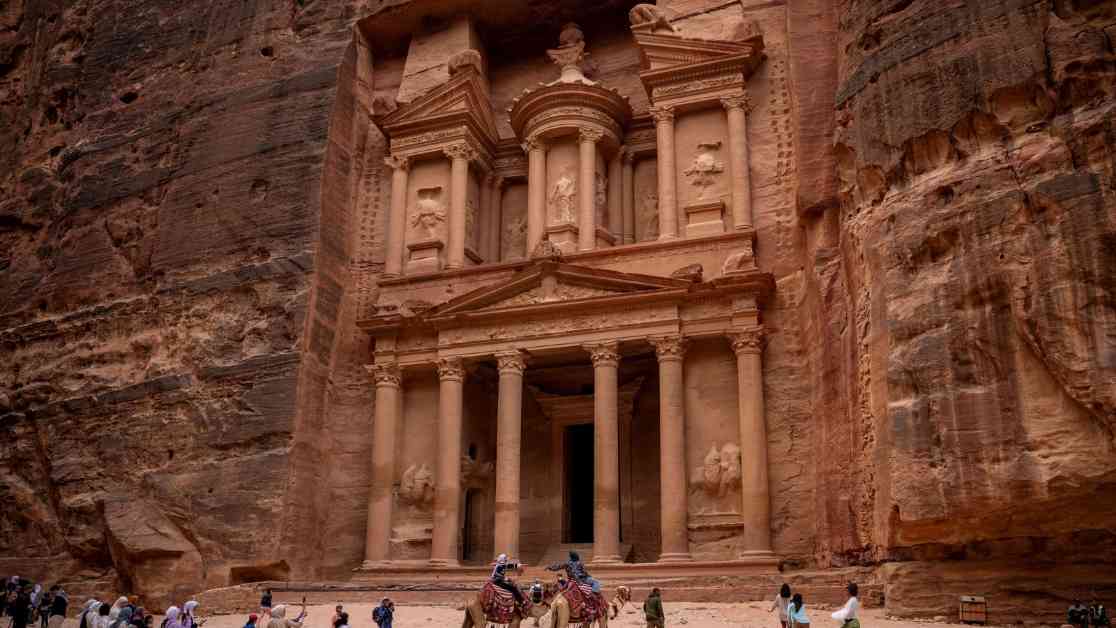Archaeologists recently made a groundbreaking discovery at the Treasury monument in Petra, Jordan – a site known as one of the Seven Wonders of the World. A secret tomb containing the remains of 12 ancient skeletons along with grave offerings was unearthed beneath the monument using remote sensing technology.
The Treasury monument itself is the focal point of an ancient city carved into the walls of a desert canyon by the Nabataean people approximately 2,000 years ago. Despite its historical significance, the true purpose of the monument remains a mystery.
Researchers from the University of St Andrews, the Jordanian Department of Antiquities, and the American Center of Research were granted permission to conduct remote sensing in the area surrounding the monument. Originally, their goal was to assess the condition of the site using electromagnetic conductivity and ground penetrating radar. However, their efforts led to an unexpected and thrilling discovery – a hidden tomb beneath the monument.
Upon excavation, one of the skeletons found in the tomb was holding a broken jug believed to date back to the first century BC. The remains included individuals of different ages and genders, ranging from children to adults. This discovery has the potential to provide valuable insights into the Nabataean Kingdom and the Treasury itself.
Professor Richard Bates from the University of St Andrews described the find as of international significance, as complete burials from the early Nabataeans are rare in Petra. The tomb’s contents, including the artifacts and human remains, are expected to shed light on the history of Petra and the Nabataean people.
Further analysis revealed that the tomb’s walls dated back to the mid-1st century BC to the early 2nd century AD. The excavation of the tomb was even featured in a two-part episode of the television series Expedition Unknown on the Discovery Channel.
This discovery marks a significant milestone in archaeological research at Petra, offering a glimpse into the lives and burial practices of the ancient Nabataean civilization. As researchers continue to study the findings, more secrets of Petra and its inhabitants are expected to be unveiled, enriching our understanding of this remarkable historical site.










